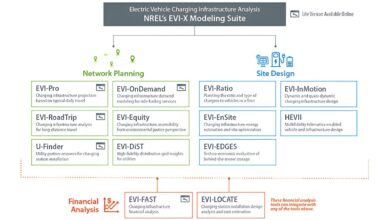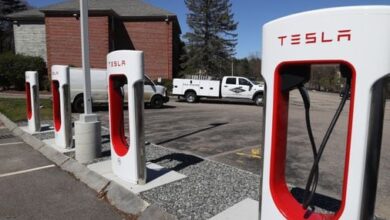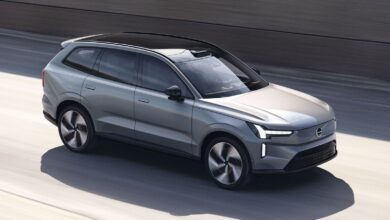The 2024 Chevrolet Equinox EV Is A Home Run
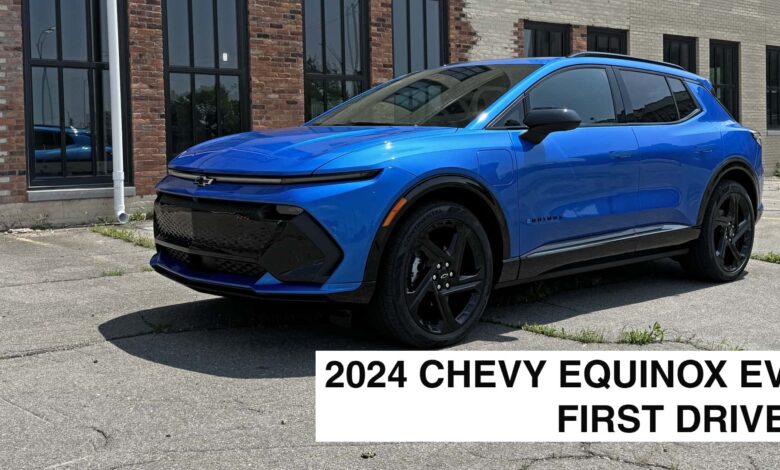
With 319 miles of range and a mid-$30,000 price after tax credits, the Equinox EV is exactly what the market needs.
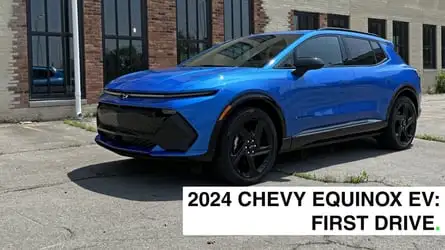
May 30, 2024 at 12:00pm ET
You can be forgiven if you don’t think about the Chevrolet Equinox all that much. While the compact crossover is Chevy’s best-selling model after the Silverado trucks—yes, really—it’s an also-ran behind the Honda CR-V and Toyota RAV4, both of which consistently outsell it.
That doesn’t mean it’s not a solid vehicle. My parents have owned two Equinoxes back-to-back, and we’ve all liked them quite a bit. The Equinox is roomy, comfortable, reasonably powerful, priced well and capable. It just does its job and fades into the background a bit. That’s one tragedy in the car world; the expensive luxury cars and exotic supercars get all the hype, while the normal cars actually get stuff done.
But that’s what the electric vehicle world needs right now—more normal cars at normal prices. No more overpriced spaceships. Choices that convince everyone to move on from gasoline.
Enter the Chevrolet Equinox EV, which seems designed to do exactly that. With up to 319 miles of range, pricing in the mid-$30,000 range after tax credits and a handsome and practical overall package, it deserves to be a hit.
It’s a badly needed home run for General Motors’ often-troubled Ultium electric experiment so far, and for the broader market as well. And I bet it will get more attention than the gas Equinox ever did.
(Full Disclosure: GM brought me to Detroit to test the Equinox EV and the Silverado EV, paying for my flights and lodging. Both vehicles are on sale as you read this.)
What Are The Specs Of The Equinox EV?
Like the gas car it shares no mechanical relationship with, the Equinox EV is a five-door compact crossover aimed at what GM calls those “Main Street” buyers: everyday families, not just the upper-income first-adopters who have made up much of the electric scene so far. It’s a superb all-around package that includes a handsome design, GM’s excellent Super Cruise driving assistance system, and an excellent range and price combo.
The Equinox EV comes in front-wheel-drive or dual-motor eAWD setups. Right now, prices start at $43,295 for the 2LT FWD model and go up to $50,095 for the RS eAWD model; all prices listed include the requisite destination fees.
Being built in Mexico with North American parts means the Equinox EV does qualify for the full $7,500 tax credits regardless of whether you buy or lease it, bringing prices into the mid-$30,000 range for the entry trims and in the mid-$40,000 range for the nicer ones. Even in FWD RS form, GM says this price and range combo beats the Hyundai Ioniq 5, Nissan Ariya, Volkswagen ID.4 and others. And when the base LT model debuts later this year, it will start at just $34,995 before any tax credits—meaning you should be able to snatch one of these for well under $30,000.
You can thank GM’s Ultium approach to scale for that. The automaker is putting all of its EVs on one common platform, with one set of modular batteries that can be added and subtracted as needed, underpinned by one shared software system. That keeps costs down.
It also means that the Equinox EV is remarkably similar to its Ultium siblings. You get a familiar 17.7-inch infotainment screen powered by Android Automotive. It has Google Automotive Services built-in, which means Google Maps, Google’s voice assistant, various streaming music apps and much more. But, perhaps infamously, no Apple CarPlay; we’ll see if GM’s in-house approach to software can really do it better.
Still, it’s a solid deal overall, and it solves one of GM’s biggest conundrums with some Ultium EVs so far: the price tag. When I drove the related Blazer RS EV last year, it didn’t feel quite worthy of that $60,215 price tag; the Silverado EV I drove in Detroit doubled down on that problem at $96,000. (More affordable models of both are either out now or expected soon.) A more detailed Blazer EV vs. Equinox EV comparison is coming later, as the two are very similar. But I think the latter will end up being the better deal overall if you don’t need the extra space.
The Equinox EV gets the same 85 kWh, 10-module battery eventually destined for the base version of the Blazer EV and Honda Prologue. That’s a decent battery size for a crossover in this class.
Perhaps the biggest downside to the Equinox EV is its 150 kW max DC charging speed, which helps keep the overall cost down but trails some rivals like the Ioniq 5 and Model Y. That’s also down from the RWD Blazer EV models, which charge a little faster at 190 kW. I don’t see it as too much of a detractor right now; 150 kW is a good average for most public DC fast chargers out there, and GM says it can add approximately 77 miles of range to be added in 10 minutes, which is genuinely not bad at all for your next family road trip.
GM doesn’t publish the industry-standard 10-80% DC fast charging time, making it impossible to directly compare it to any competitors. We’ll do our own charging test to get that number as soon as we can.
How Does The Chevy Equinox EV Drive?
If Chevy wasn’t already bringing back the Bolt EUV with Ultium tech, I’d easily call the Equinox EV the second coming of the Bolt. And I mean that in a good way, too. This is an incredibly straightforward, user-friendly EV, designed to be as welcoming to the electric space as possible. It’s also slimmer overall than the relatively bulky Blazer EV and drives as such, which for me is where it gets some of those Bolt vibes.
The thing is, it’s still a bit on the heavier side in terms of how it drives. GM isn’t listing a curb weight for the Equinox EV, so, while I’ll assume it’s lighter than the 5,000-lb-plus Blazer EV, it feels… “substantive” for a small crossover, to put it nicely. The steering feel has a solid weight to it as well. But since the center of gravity is down low, thanks to the battery in the floor, it all feels rather balanced. Body roll is minimal.
In FWD form, the Equinox EV puts down 213 hp and 236 lb-ft of torque. That’s the one that gets you 319 miles of range. Opt for the eAWD version and you get a power boost to 288 hp and 333 lb-ft of torque, but your range drops to a still-good 285 miles. (I only got to test the FWD RS version in Detroit; a longer test of the eAWD model will surely happen later.
Either way, the Equinox isn’t crazy, screaming fast like many EVs are. There’s no Wide Open Watts mode here to scare the hell out of your passengers. But it is reasonably quick, jumping from 60 mph to 80 mph with the kind of silent composure that’ll have you rolling down your window and telling the state trooper that you had no idea you were going so fast.
It’s comfy, predictable and no-nonsense for everyday driving. GM hasn’t listed zero to 60 mph times for the FWD models, but the 288-hp eAWD version gets a not-bad-at-all zero to 60 mph time of 5.9 seconds.
What’s Good?
Obviously, the range is excellent. The “north of 300 miles” club still skews toward more expensive cars and trucks right now, so the Equinox EV is a welcome addition for those of us who don’t want to spend luxury car money to go the distance.
I have few complaints about the interior, which wears the Ultium family digs as well as the much more expensive Blazer EV does. The screens are bright and crisp, the controls are easy to figure out (including the redundant physical buttons if touchscreens aren’t your jam), and because this is America, the seats are comfortable and the cupholders are plentiful.
The RS models we drove had some nice touches as well, like colored seat and dash accents; even the cheaper LT models have some nice two-tone additions across the dashboard. It all feels nicer to me than the more utilitarian Silverado EV, which is similar but costs two or three times more.
I have to give the latest version of the Super Cruise hands-free, eyes-on driving assistance system its flowers here. On both the Equinox EV and Silverado EV I tested (which can tow with the system engaged), Super Cruise proved to be reliable, competent and vigilant on Detroit’s often-chaotic highways. Super Cruise is available on 2LT models and above.
It’ll execute an automatic lane change when it deems this necessary and even warns you with a seat vibration and animation on the driver’s display. It even passes on the right when someone is hogging the left lane, which was a fun touch. My main issue was that on the Equinox EV, Super Cruise often gave me a “distracted driver” warning because I was wearing sunglasses and the steering wheel-mounted sensor bar couldn’t detect my eyes; that’s occasionally a problem on other systems like Ford’s BlueCruise, but I hope it gets some fine-tuning here.
I’m willing to give GM’s Google-powered infotainment system a try; the automaker swears it’s worked through the glitches. (And I saw none in my Equinox EV test, for the record.) The navigation system’s built-in charger finder is excellent, as is its ability to plan your electric route—you tell it where you want to go, it tells you where and when to fast-charge and to what percentage. The suite of available apps is impressive and growing too, and the voice controls were generally excellent.
What’s Not So Good?
My biggest gripe was that in FWD form, you get more torque steer than past gas-powered Equinoxes I’ve driven. It’s not overwhelming, but with the immediate torque from these electric motors, it’s a bit more than you’d think at first, especially when the wheels are turned. Expect to go through tires quicker than in a gas-powered model.
I think a RWD version would’ve been more balanced, but GM wanted to aim for customers who were more used to this setup and maybe living in colder climates too. By the way, for those folks, the Equinox EV has a heated windshield as an available feature to kill ice and snow that piles up there. That feels like one of those options you can’t live without, once you try it.
Unfortunately, the Equinox EV is just a little less fun than some electric crossovers in this class. There are some quicker and dynamically superior options out there, like the Tesla Model Y and even the Toyota bZ4X, which loses on range and charging times here but drives better than you think. I’d say the Equinox EV is on par with the Ariya and ID.4, in terms of being a no-nonsense everyday family car rather than an outright performer. But you may not need that anyway.
Finally, there’s that lack of Apple CarPlay. That may be a dealbreaker for some, but I encourage any die-hards to give the Google-based software system a try before they write it off entirely.
How Is It As An EV?
Unlike the bZ4X, where engineers added batteries and a smartphone app and kind of called it a day, the Equinox EV brings a cohesive approach to electric driving. Like other GM EVs before it, you can activate one-pedal driving with a dedicated icon on the infotainment screen or toggle it on the fly with a steering wheel paddle. I found that feature a bit cumbersome on the much heavier Silverado EV, but it works better here when going down a hill or just to modulate your speed and recapture energy before a turn.
Efficiency was also excellent, even in our limited drive. In a mix of highway and around-town speeds, I averaged about 2.8 kWh per mile, and even saw that climb as high as 4.3 kWh at one point when babying the throttle and keeping it smooth with one-pedal driving engaged.
Unlike the huge split-pack battery on the Silverado EV, the Equinox EV has a fully 400V electrical architecture, hence the slower charging times than, say, an Ioniq 5. That does help keep this car so affordable. Some will balk at the 150 kW max speeds, but as I mentioned, I think it may be fine for most people’s road trips; some more in-depth tests will be needed to see how it actually performs on the chargers.
Add in the full slate of tax credits whether you lease it or buy it, and the Equinox EV presents a very promising overall package.
Early Verdict
I didn’t come away with pages and pages full of notes on how the Equinox EV drives. But again, that’s exactly the point. It’s meant to be a normal car, for normal people, that doesn’t run on gasoline. It’s probably going to bring in a lot of folks who have never experienced this world before.
When I drove the Silverado EV, I struggled to understand how it’s an objectively better option for someone with truck-owner needs who maybe isn’t dead-set on going electric. Not at that price tag, anyway.
But the Equinox EV is a different story; this one’s a no-brainer. It’s a superior product to the regular Equinox, which by comparison is now just another crossover with a small-displacement turbocharged four-cylinder engine. If you can get this instead, with 319 miles of range, excellent route planning for your road trips, respectable fast charging and, presumably, a home charger—why would you go back to paying for gas?
That’s the case car companies have to make as they aim EVs at more mainstream drivers than ever before. They’d all do well to follow the Equinox EV’s lead here.
Contact the author: patrick.george@insideevs.com
Gallery: 2024 Chevrolet Equinox EV: First Drive, May 2024 Detroit
73 Photos
FAQs
It’s available right now. As of this writing, most examples are between $40,000 to $50,000 nationwide before any tax credits, which the Equinox EV does fully qualify for. The base Equinox EV LT, with a starting MSRP of $34,995, will be available for ordering later in the year.
Chevrolet no longer bundles any free charging deals with its current EVs. “Chevy EV owners have access to EV Concierge for live help, FAQs, access to EV resources and more,” a GM spokesperson said.
The Equinox EV is aimed directly at many compact and smaller-midsize EV crossovers, like the Volkswagen ID.4, Nissan Ariya, Tesla Model Y, Hyundai Ioniq 5 and Toyota bZ4X. Buyers may also want to consider the slightly larger Chevy Blazer EV, which has similar specs. The Hyundai Kona EV and Kia Niro EV may also be potential competitors.
No, it does not. GM’s new in-house software for EVs no longer offers that feature, but instead provides native integration for Google, Spotify and other popular apps.
A true InsideEVs fast-charging test is coming soon. GM says that the Equinox EV has a maximum DC fast charging speed of 150 kW, which is faster than the Ariya but slower than the Ioniq 5, ID.4 Pro and Model Y. GM also says it can add approximately 77 miles of range to be added in 10 minutes on a 150 kW charger, though it doesn’t specify what range that covers.
| 2024 Chevrolet Equinox EV | |
|---|---|
| Battery | 85 kWh lithium-ion General Motors Ultium battery |
| EV Range | FWD: 319 miles / AWD: 285 miles |
| Drive Type | Single-Motor FWD / Dual-Motor eAWD |
| Output | FWD: 213 hp / AWD: 288 hp |
| Maximum torque | FWD: 236 lb-ft / AWD: 333 lb-ft |
| Charge Time | 77 miles in 10 minutes at 150 kW DC / 36 miles per hour at 11.5 kW AC |
| Weight | N/A |
| Base Price | 2LT FWD: $43,295 / 2LT AWD $46,595 |
| As-Tested Price | 2RS FWD: $44,795 |
| Efficiency | 3.2 Miles/kWh (est.) |
Read more
